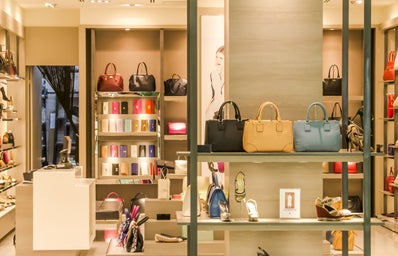As the unofficial fashion-show aficionado of HC UFL, I took the liberty of watching over 10 New York Fashion Week shows in the name of writing to see what the fashion industry is up to next. While I was “researching” (i.e. binging fashion shows in bed), something about Dolce & Gabbana’s Milan Fall 2018 Show caught my eye – and it wasn’t just their new styles for the season.
The iconic fashion brand left me shook as I saw that their handbags were being flown down the runway by drones; not models but small thin-framed robotic drones. I immediately thought, “Does this signal a change for the future of the fashion industry?”
For as long as I remember, models have been just as important as the clothing brands they’re modeling. Names of renowned models like Gigi Hadid, Iman, Cindy Crawford and Kendall Jenner are constantly plastered on magazine covers. When the public became upset about the lack of color and size diversity in fashion, models such as Winnie Harlow, Ashley Graham and Adwoa Aboah dominated runways and the public eye. Fashion brands with diverse models were able to use the newfound attention from their models to captivate audiences and garner applause from fashion editors. However, in a time when diverse models are slowly but surely becoming the norm, some brands are looking to drones and robots to set their shows apart.
One of the first designers to take the plunge into the intersection of technology and fashion was haute-couture label Alexander McQueen. In his “No. 13” 1999 Spring Collection, McQueen-clad model Shalom Harlow in a white layered tulle dress stood on a rotating turn table while robots spray-painted her dress with black and florescent yellow paint. McQueen’s reputation for haunting designs and fearless risks was the perfect fit for introducing the fashion world to technology.
Another show that’s caught up with the futuristic trend of artificial intelligence: Chanel’s 2017 Spring/Summer collection, which featured models outfitted in glossy white helmets, gloves, boots and their tweed-heavy collection. Not only were some of the models dressed as robots who resembled Eve from the Pixar movie “Wall-E,” but the collection also featured handbags with LED displays and a runway that looked like a futuristic computer laboratory.
Most recently, Dolce and Gabanna jumped on the technology bandwagon and utilized drones to model their newest line of Fall/Winter 2018/19 Collection. The drones each carried a different handbag and were programmed to fly down the runway just as an experienced model would strut down it. This show marks the second appearance of drones in the public eye during 2018 thus far, as the 2018 Pyeong Chang Olympics utilized similar drones by coordinating images in the sky with drones equipped with color-changing lights.
As for fashion and technology, I look forward to seeing more designers take creative control by utilizing newly developed technology in their shows in the future. What’s my prediction of brands who will take the plunge into electronics? Phillip Plein, who already had an Optimus-Prime-sized robot walk model Irina Shayk down the runway; Marc Jacobs, who is known for their bold choices; and Gucci, who had their models work the runway while carrying busts of themselves. In the meantime, I’ll continue watching fashion shows and keeping my eyes peeled for any signs of artificially intelligent life.


